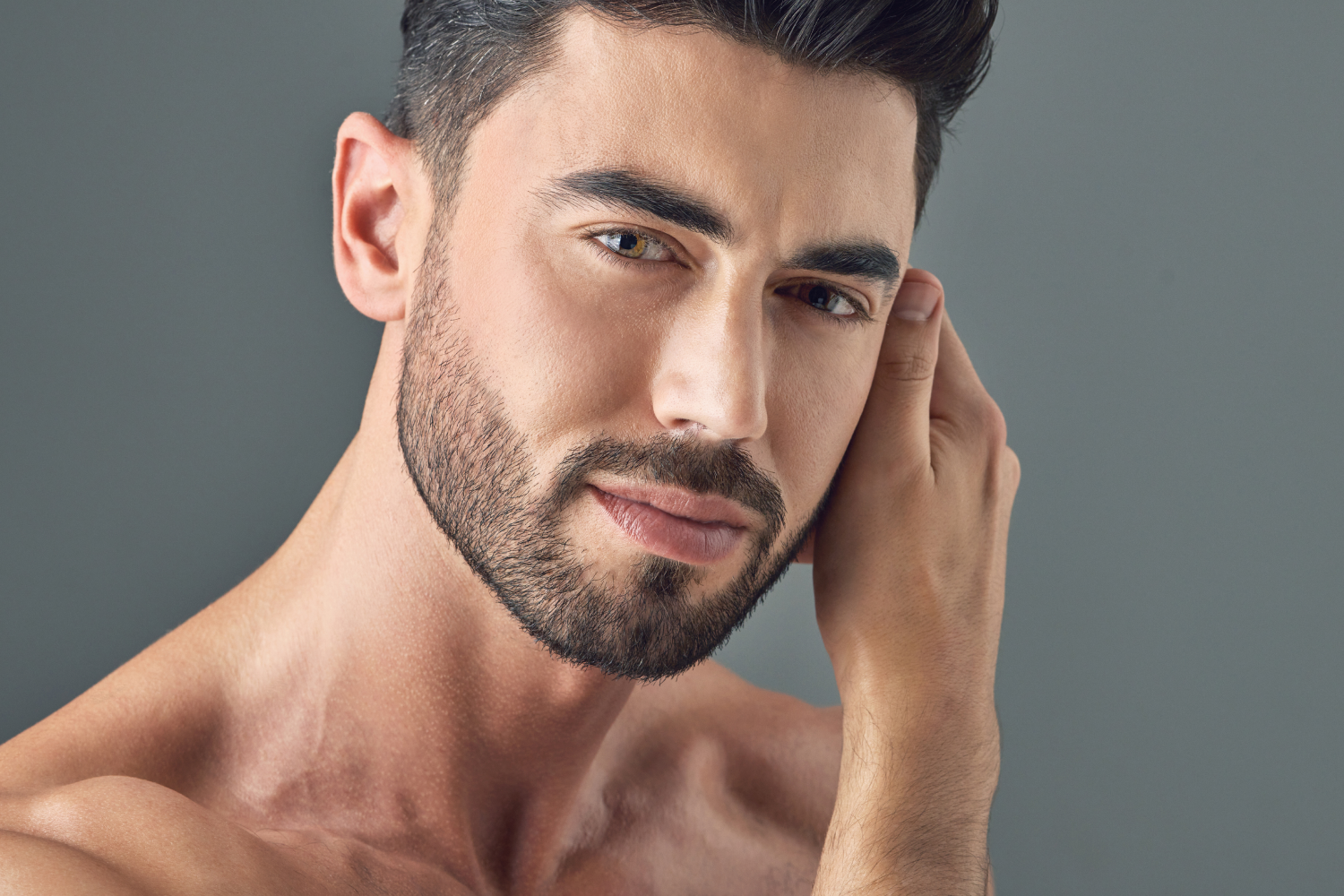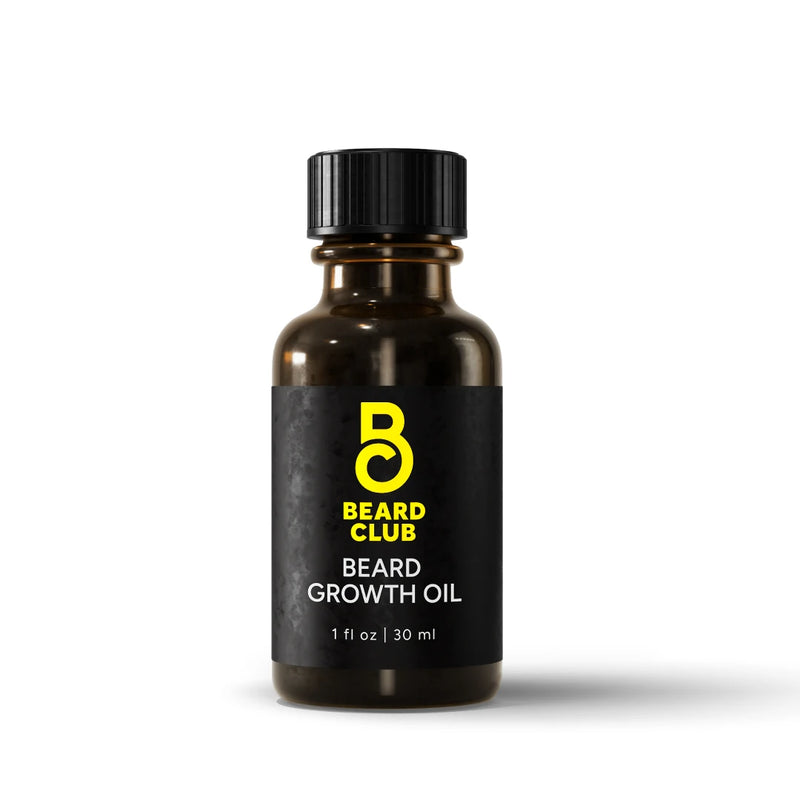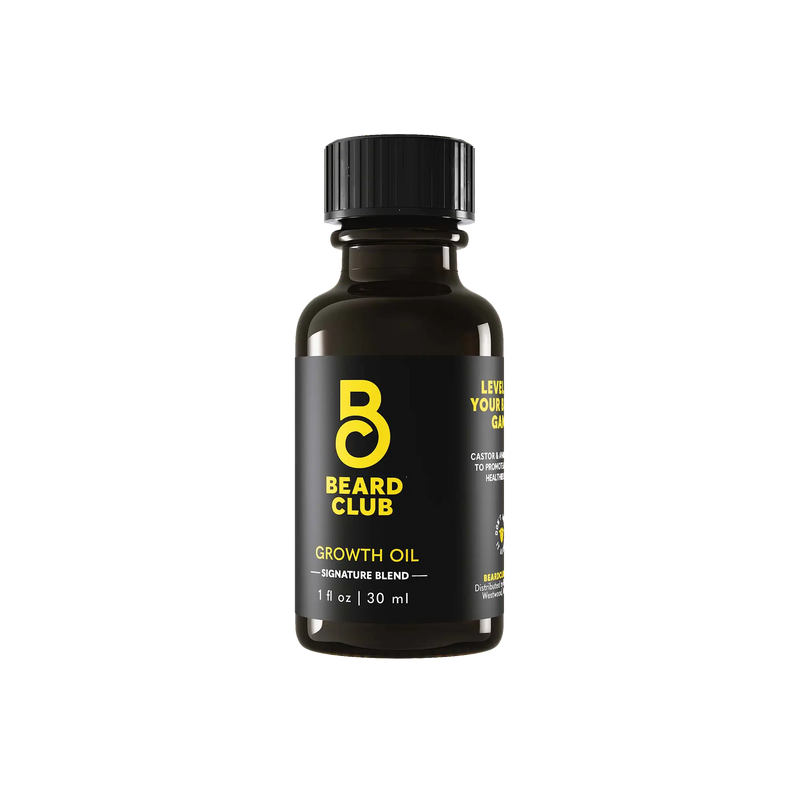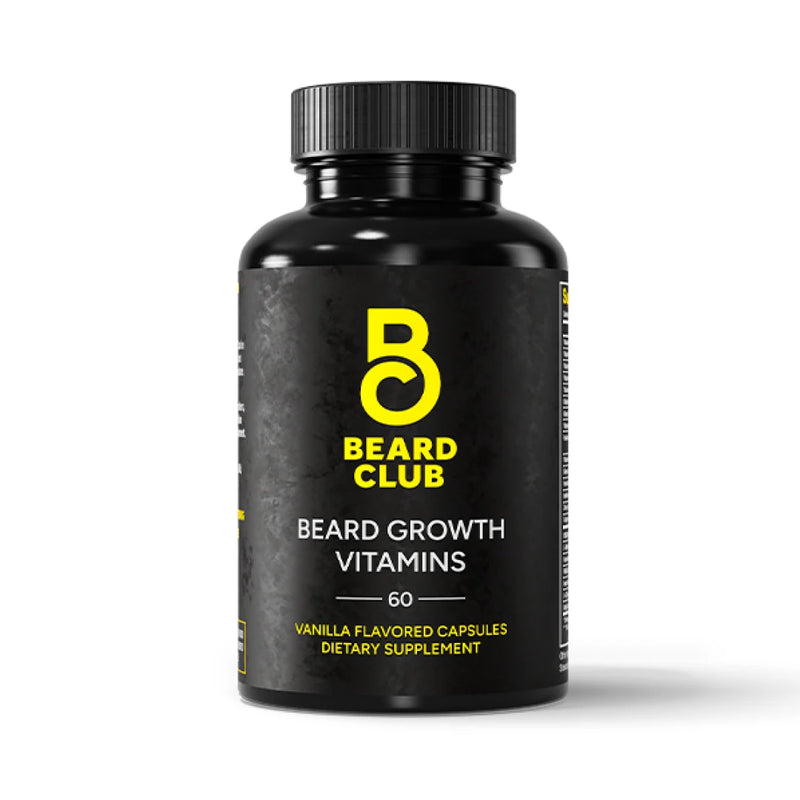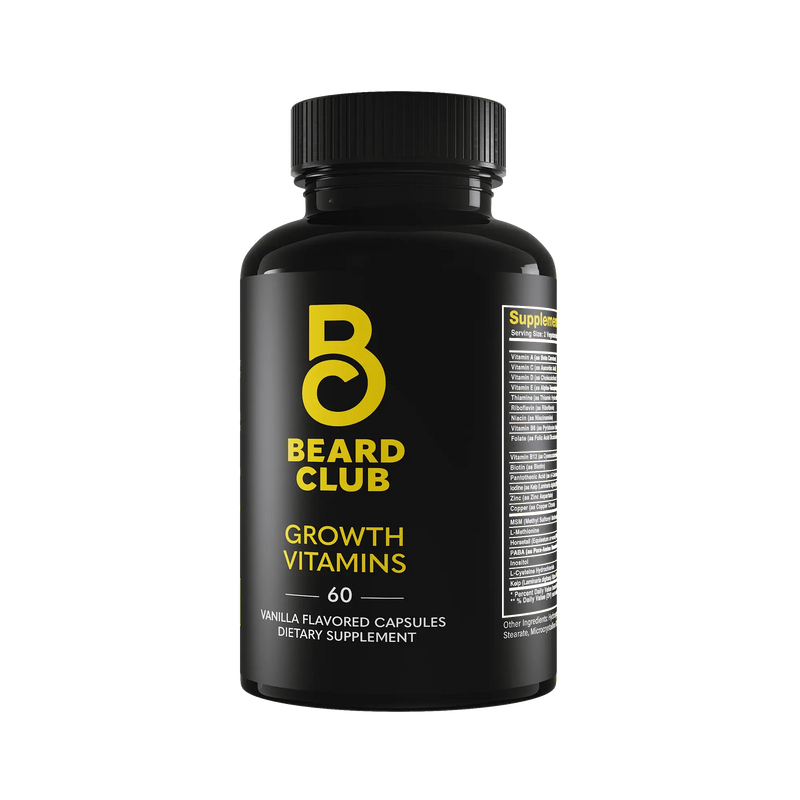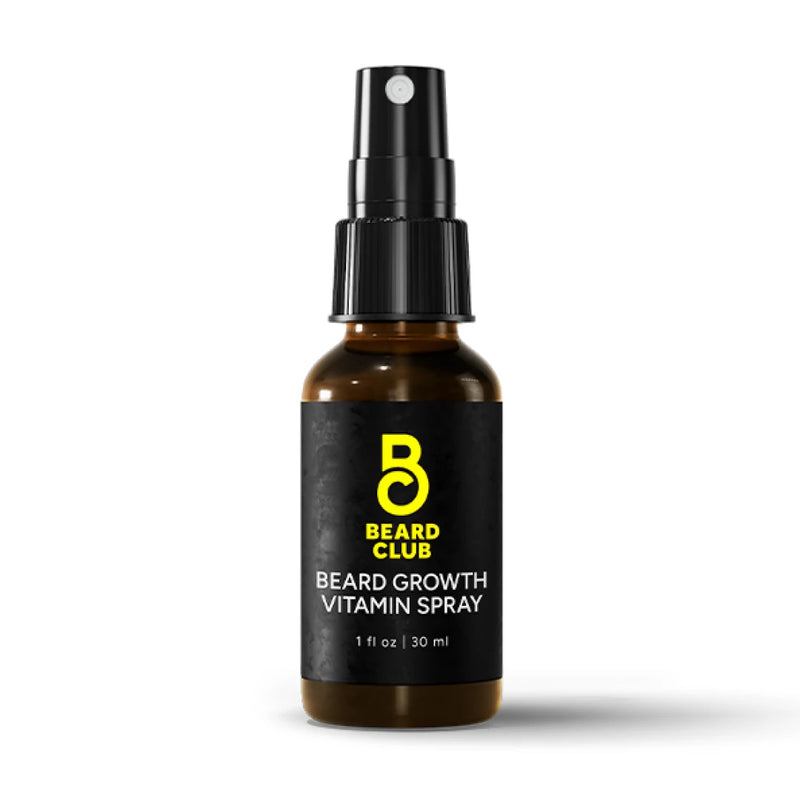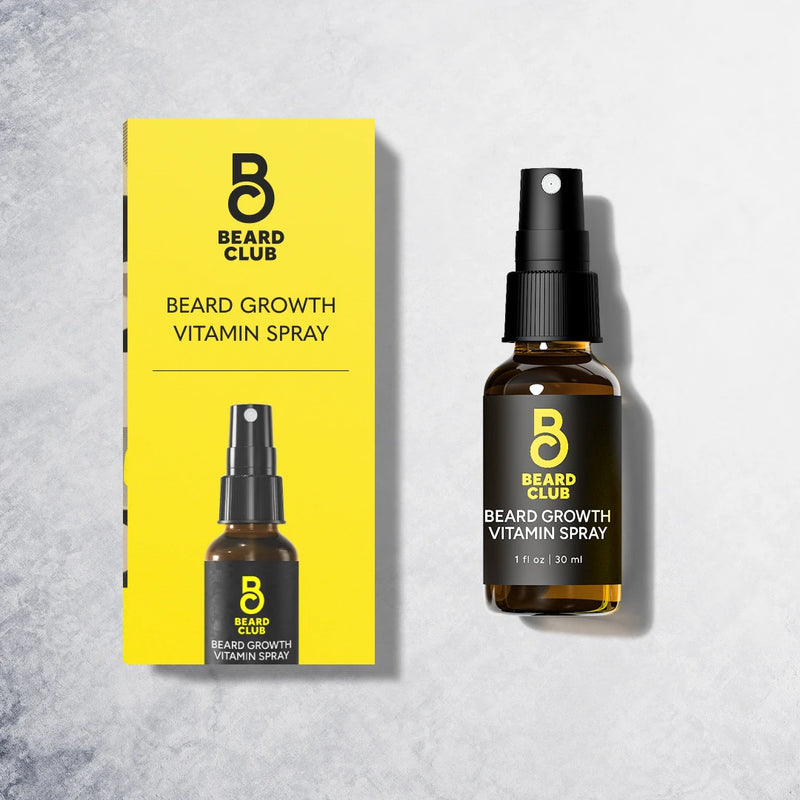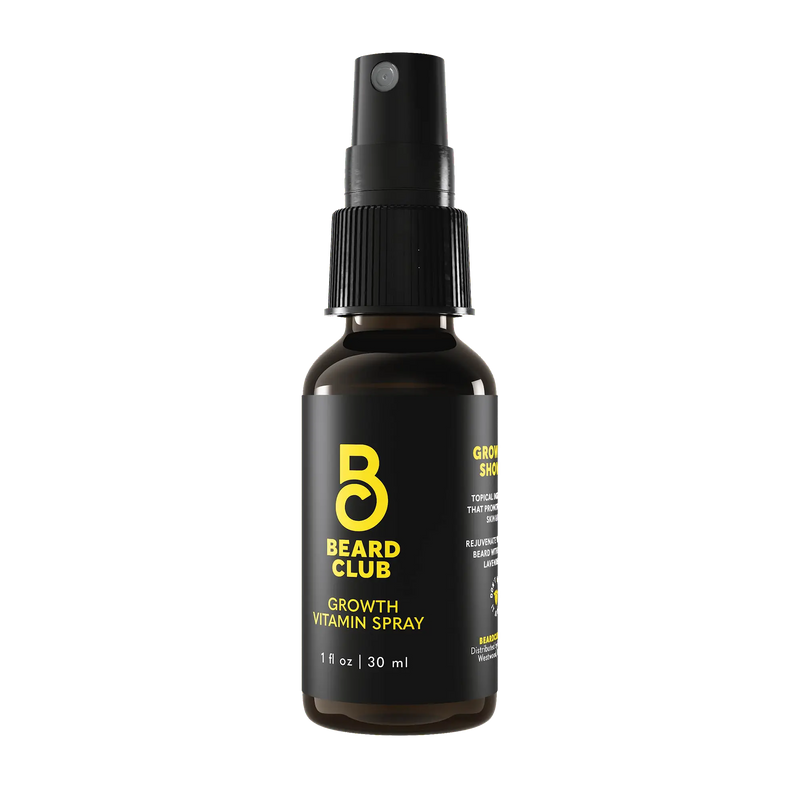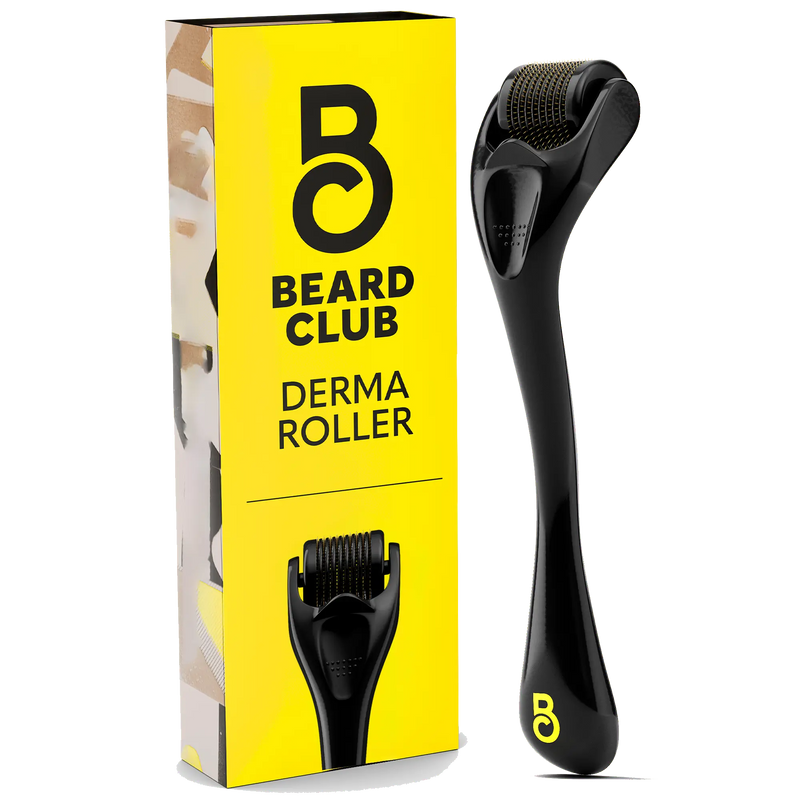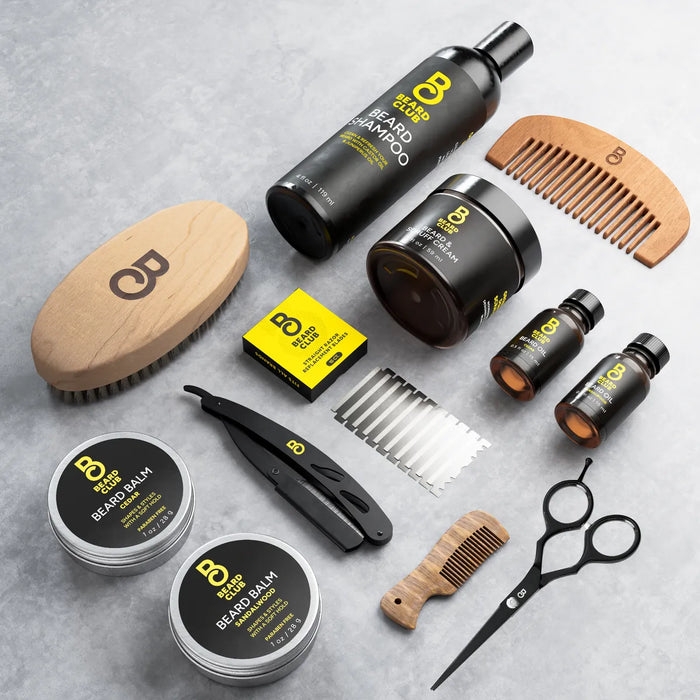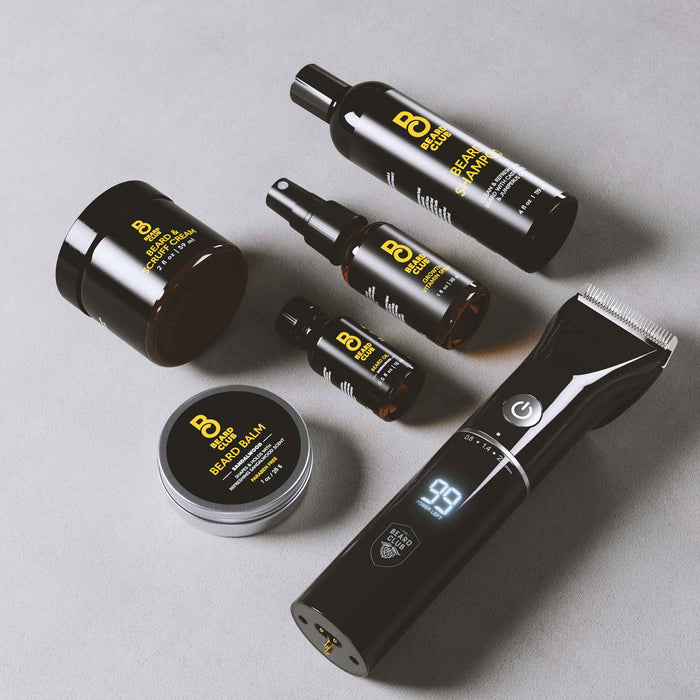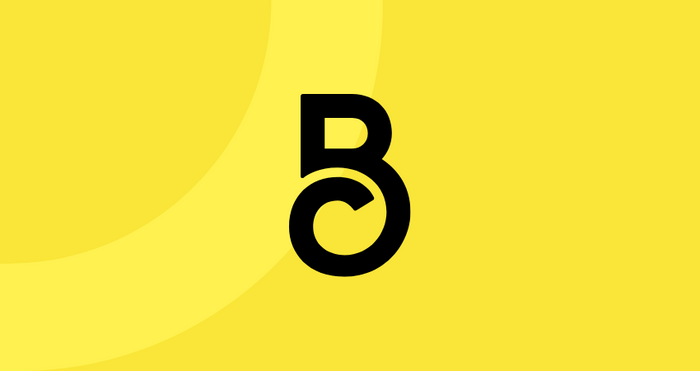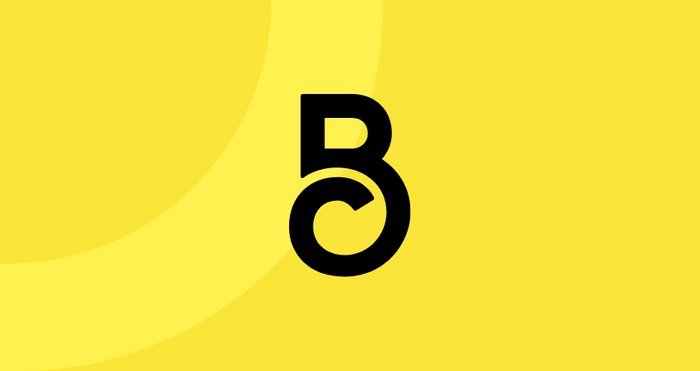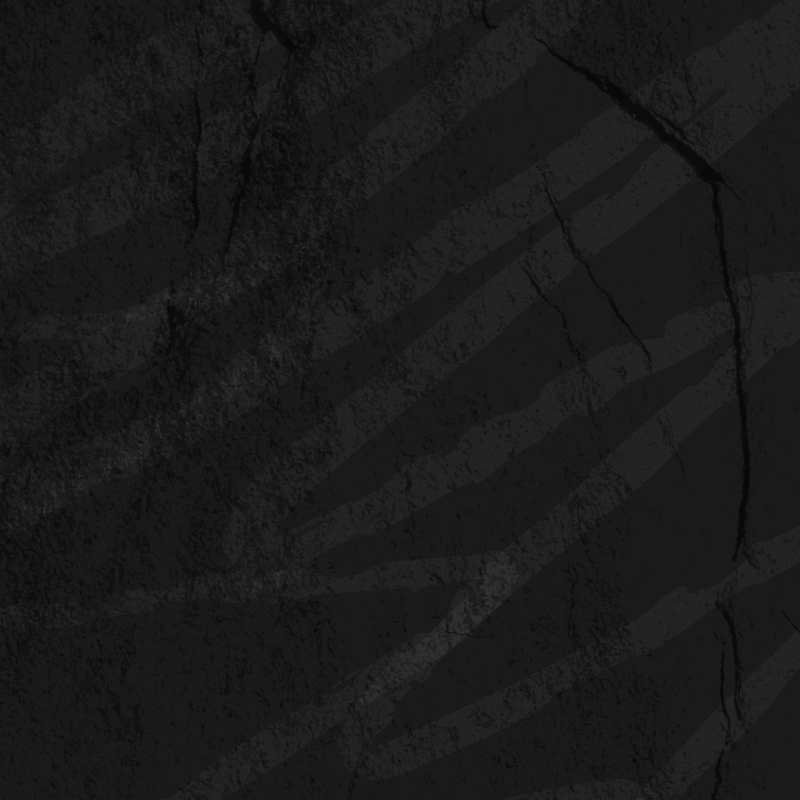Signs You Can't Grow A Beard: 7 Causes & What to Do
It’s easy to feel a little insecure when you look around and see so many dudes rocking full-face beards. Meanwhile, you’re barely able to get anything more than stubble. While it might feel like you’re somehow doing something wrong, it could just be science.
Let’s review the scientific reasons why you might not be able to grow some hair, as well as some ways you may be able to stimulate hair growth to get a better-looking beard.
Beard Growth Misconceptions
Before we talk about real science, let’s talk about some fake science to quell some of those misnomers you’ve probably already heard. Let’s get the big one out of the way — shaving does not make your hair grow back even thicker.
Shaving Doesn’t Affect Your Hair
Shaving has no effect on the root of your hair beneath the skin and doesn’t affect the way your hair grows. It might make the hair feel a bit stubbly and coarse for a while, and it might even appear a bit darker for a period of time as it grows in.
It’s Not All About Testosterone
Some people look at a dude with a thick beard and think that he has high levels oftestosterone, which is the major sex hormone in men that plays roles in many bodily processes, including the appearance of facial hair. While it can play a role in hair growth, it doesn’t have an effect on how thick or sparse your beard hair looks. So you might be loaded with testosterone and still have a patchy beard.
It’s all to say: There’s no magic pill you can take to make your facial hair grow exactly how you want it. Let’s dig into the real science behind what could be causing your facial hair to look a little less perfect than you’d like.
7 Signs You Can’t Grow a Beard
Your hair might not be growing for a lot of different reasons, including some of these science-backed explanations.
1. Genetics
The thickness and fullness of your beard are primarily determined by genetic factors. Basically, if your father and grandparents have thick beards, there’s a really good chance you’re going to have a thick beard too.
Men have a hormone in their body called androgen, which is responsible for facial hair growth and a deep voice, among other common “masculine” traits. There’s also an enzyme in the body that converts testosterone (an androgen hormone) into another one called DHT, or dihydrotestosterone.
When DHT binds to the receptors on your hair follicles, it stimulates the growth of facial hair. But your genetics determine how sensitive your follicles actually are to DHT in the first place. So if your dad didn’t have sensitive follicles, then you probably won’t be able to grow a hefty beard.
That’s a lot of chemistry talk, but to make a long story short, if your dad and grandfather both couldn’t grow a beard, you probably won’t either. The opposite is also true: if your grandfather was Abraham Lincoln and your Dad was Gandalf, then you’re probably going to have a luscious beard (and some explaining to do).
2. Ethnicity
Your ability to grow a massive beard might also have something to do with your genetics in a different way: your ethnic background. Studies on facial hair growth by country reported that Chinese men generally have less facial hair compared to Caucasian men, with men from Mediterranean countries having the most facial hair overall.
It also seems like the location of hair on the face varies by ethnicity, with Chinese men having facial hair that concentrates around the mouth, while Caucasian men have more hair on the neck, chin, and cheeks.
3. Age
Your hair is likely to get thicker with age. As a teenager, you’re not likely to have a lot of facial hair growth, but it tends to increase until around age 30. Unlike the hair on the top of your head, your facial hair doesn’t usually stop growing, so you can enjoy your beard until the very end of time, even if your head starts to shine.
4. Alopecia Areata
Alopecia areata, often referred to as simply alopecia, is a condition in which the immune system attacks its own hair follicles. The result is hair loss which can be extensive, and it can occur on all parts of the body.
It’s not known exactly what causes this condition, and the severity of alopecia can vary from person to person. Both men and women can get it, though you have a higher risk of getting it if you have a close family member with this disease. Onset can occur at any age, though it is most common before the age of 30.
Alopecia usually starts with the sudden loss of round or oval patches on the scalp, but it can also affect the beard as well as eyebrows and lashes. There’s usually no rash or redness – just hair loss.
Sometimes, the hair can grow back naturally and evenly. But for others, additional patches might continue to develop, and hair may be lost from the entire scalp. This is rare and known as alopecia totalis. People with alopecia also sometimes notice changes to their nails, such as ridges or pits in their fingernails and toenails.
5. Testosterone
While testosterone levels won’t change the patchiness, or lack thereof, on your beard, it can affect its ability to grow how you want it to. People with super low testosterone levels likely have little to no facial hair whatsoever.
With that said, unless your testosterone is clinically low, it probably isn’t affecting your hair growth. Low testosterone can be accompanied by erectile dysfunction, fatigue, and trouble building muscle.
6. Diet and Exercise
For some men, it’s not necessarily that they can’t grow a beard but rather that the beard is not growing healthily. This can make it look coarse, patchy, and dry. Much of this might be due to lifestyle habits like diet and exercise.
One of the key components for healthy hair is hydration, lean protein, and vitamins, which you can get from your diet. You can up your protein intake by incorporating more foods like beans, chicken, fish, beef, and tree nuts into your diet.
As far as exercise, it can help stave off stress hormones which can otherwise reduce the quality of the hair on your head and face. Strength training can also increase testosterone levels for a brief period, which can be helpful for people with extremely low levels that make it impossible to grow a beard.
7. Stress
Feeling so stressed that you want to pull your hair out is one thing, but being so stressed that your hair just stops growing completely is another. Stress and hair loss can be related.
Telogen effluvium is a condition in which significant stress pushes hair follicles into a resting phase. Within a few months, these hairs might suddenly fall out or become detached from combing or washing. This can affect your beard hair as well as the hair on your head.
Not being able to grow out your beard can cause some stress, and being stressed can make your beard stop growing. It’s a tough cycle to break, but it can start with you. Don’t sweat the small stuff, and know that you can still look like an amazing, handsome man even if your beard isn’t exactly how you want it to look.
Ways To Stimulate Beard Growth
If you’re having some trouble growing a beard, hope isn’t lost. In fact, even if you are able to grow a beard, use these tips to help you grow your beard faster by amplifying its health, so it looks better than ever.
Amp Up That Skincare Routine
Skincare isn’t just something that TikTok influencers record videos about — it’s something that men should make a priority to improve their overall health. Men’s skin care can have a direct effect on beard growth.
Dry skin or dirty skin can clog your pores, which leads to ingrown hair and irritated skin. Not only does that affect hair growth, but it also just makes your beard feel super itchy and uncomfortable to the point where you’ll probably want to shave it off anyway. Finding a solid facial cleanser can go a long way.

On top of your skincare routine should be a beard care routine rounded out by our Beard Growth Kit. It has everything you need to grow and maintain your beard exactly how you want it. Beard Accelerators go beyond your daily skincare routine to give your beard that Rocky-style workout it’s been craving.
Eat Healthy
A healthy diet can support your hair and skin health, so be sure to load up on protein, eat lots of fruits and veggies, and try to get essential vitamins and nutrients. If you need a little vitamin boost, we’ve got you covered with our beard growth vitamins that are made with Biotin, Vitamin A, Vitamin B6, and more to boost facial hair growth and thicken your beard.
Avoid Smoking
Smoking is not only bad for your teeth and lungs, but it’s also bad for your hair! Avoiding it is the best choice, but if you do decide to engage, try to lower your consumption to try to improve the appearance of your beard.
What Are Some Signs Your Beard Is Struggling To Grow?
We’ve covered why some beards never make it past patchy stubble. We even touched on how to help your facial hair sprout. But let’s be real — sometimes, your beard stays struggling no matter how much TLC you give it.
Here are a few signs your beard might need extra attention to grow:
Patchy Growth That Never Fills In
If you’re rocking a goatee because your cheeks or sideburns refuse to grow in, it could mean your beard isn’t reaching its full potential. Patchy spots that stay sparse despite your best efforts are a dead giveaway of struggle.
Painfully Slow Hair Growth
If your beard’s growth rate is so slow you can’t even tell it’s trying, that’s a sign your follicles might not be firing on all cylinders. While scalp hair might seem to grow steadily, your beard can be stuck in neutral.
Feeling Weak or Brittle
Facial hair that feels like dried-out straw could mean your beard isn’t thriving. A thin beard prone to breaking is another telltale sign.
Uneven or Inconsistent Growth Patterns
One side of your beard looks like it’s auditioning for a Viking role, while the other side couldn’t care less. Patchy or mismatched growth patterns like that indicate your beard might need extra attention.
Shedding or Hair Loss
If you’re noticing more beard hair in the sink than on your face, it could mean your follicles are weak. It could also mean your hair isn’t anchoring properly. Excessive hair loss is a red flag that your beard isn’t thriving.
Can Everyone Grow a Beard?
We’ll give it to you straight: not everyone is destined for a full beard. Remember the genetic and hormonal factors we discussed before? Those play a massive role in whether your facial hair dreams will come true. While some guys can easily grow thicker beards, others end up with patchy ones that refuse to cooperate.
But here’s the thing: Even if you’re not on track for a Gandalf-level beard, it doesn’t mean all hope is lost. Beard growth isn’t always an all-or-nothing game. Instead, it’s about understanding your growth patterns and working with what you’ve got.
Whether it’s a low-maintenance goatee, some well-groomed sideburns, or embracing your scruff, there’s a look for everyone.
How to Grow a Beard If You Can’t
Growing a beard isn’t always as simple as tossing your razor and waiting for the magic to happen. If your facial hair refuses to cooperate, it’s time to rethink your strategy and focus on tactics designed to work with your specific situation.
Here’s how to tackle stubborn growth:
Give Your Skin Some Love
Think of your skin as the foundation of your beard — healthy skin creates the perfect environment for hair to grow.
Start by exfoliating regularly to remove dead skin cells and unclog your pores. Follow up with a hydrating moisturizer or our Beard Oil to keep your skin and hair follicles in top shape.
Experiment With Different Beard Styles
If a full beard isn’t in the cards, lean into what you can grow. Not everyone needs lumberjack-worthy facial hair to look sharp. Countless styles can look just as striking and suit your face shape.
Consider Growth Aids
For guys who want to push the limits, tools like minoxidil have been known to stimulate hair growth in some cases. It’s worth talking to your doctor if your facial hair is especially sparse. Growth supplements, paired with a balanced diet, can potentially give your follicles the nudge they need.
Use the Right Grooming Tools
A high-quality trimmer like our Beard and Hair Trimmer isn’t just for maintenance — it can shape your beard and create the illusion of fullness. Keeping your edges sharp and clean can elevate even a thin beard, making it look more intentional and polished.
Be Realistic and Persistent
Some guys aren’t wired for thicker beards, and that’s okay. The key is patience. Healthy hair growth happens at its own pace, and a consistent routine is the best way to see results over time. Even if your growth rate feels slow, persistence can pay off.
What Are the First Signs of Beard Growth?
Is that shadow on your upper lip the real deal or just a trick of the light? When spotting the early signs of beard growth, it’s all about paying attention to the details.
Whether you’re waiting for your first whiskers to sprout or keeping an eye out for new growth, here’s what to look for:
The Peach Fuzz Phase
It all starts with soft, barely-there hairs, aka peach fuzz. These light, fine strands might not seem like much, but they’re your beard’s big debut. This is your hair follicles waking up and saying, “Let’s do this.”
Thicker Sideburns
Next, you’ll notice your sideburns starting to fill in. This area is what really kicks things off, showing thicker, darker hairs before the rest of your face gets the memo. Think of your sideburns as the warm-up for the main show.
Chin and Mustache Hints
Around the same time, your mustache and chin get in on the action. You might even spot a few darker patches of your beard growing thicker by the day. It’s like your face is working on its own beard blueprint.
Growth Patterns Taking Shape
Even in the early days, you’ll notice your unique growth pattern. No matter if your beard favors your jawline, chin, or cheeks, every guy’s facial hair has its own game plan. Embrace it — it’s what makes your style one-of-a-kind!

Now that you’re spotting those first signs of greatness, keep that budding beard happy and healthy with a quality routine. Start with a beard essential like our Beard Shampoo. After all, a great beard starts with great care.
In Conclusion
Not being able to grow a beard is a hard feeling to grapple with, but there might be some science-based reasons for it. Genetics is usually the main reason, but it might also have to do with age, ethnicity, testosterone, underlying conditions like alopecia, diet, exercise, or stress.
But you can set yourself up for an even thicker and fuller beard with healthy habits like a good diet and regular exercise, as well as healthy beard care routines. Join the Beard Club and take your beard growth to the next level!
Sources:
Does shaved hair grow back thicker? | The Mayo Clinic
Testosterone — What It Does And Doesn't Do | Harvard Health
Hormonal Effects on Hair Follicles | PMC
Telogen Effluvium: Symptoms, Causes, Treatment & Regrowth | Cleveland Clinic
